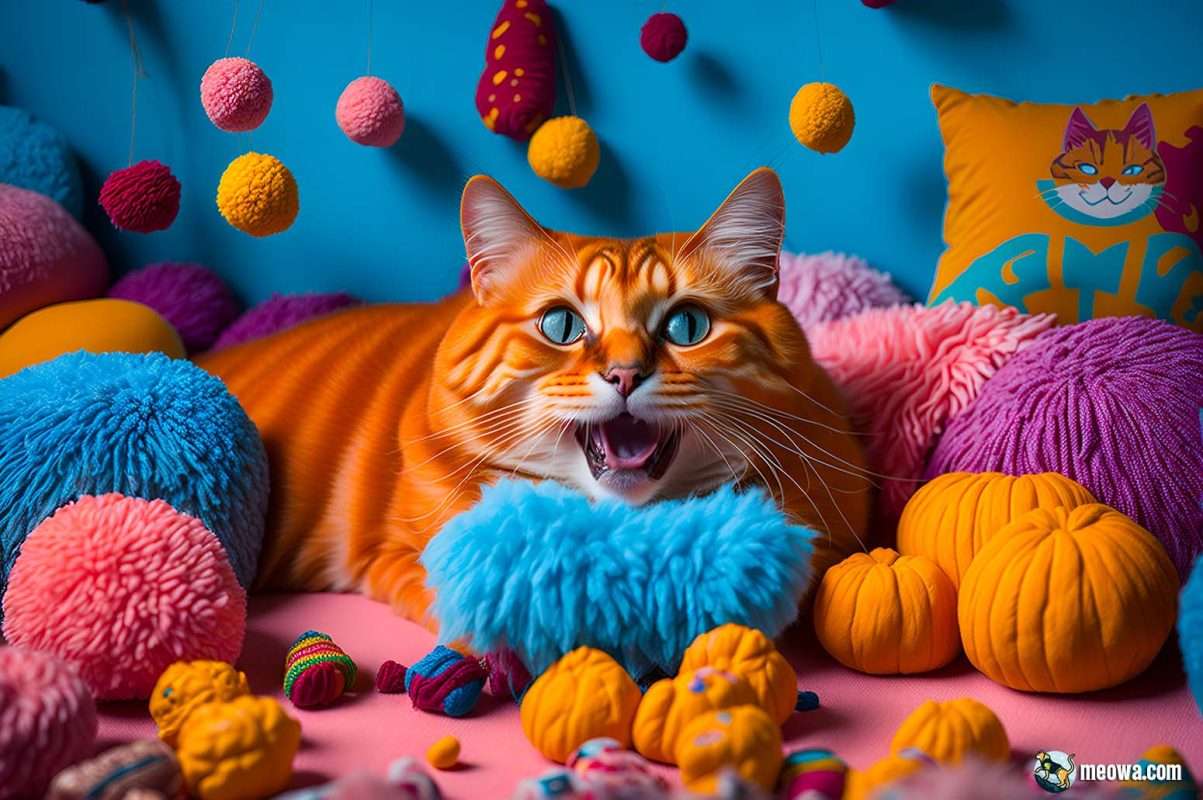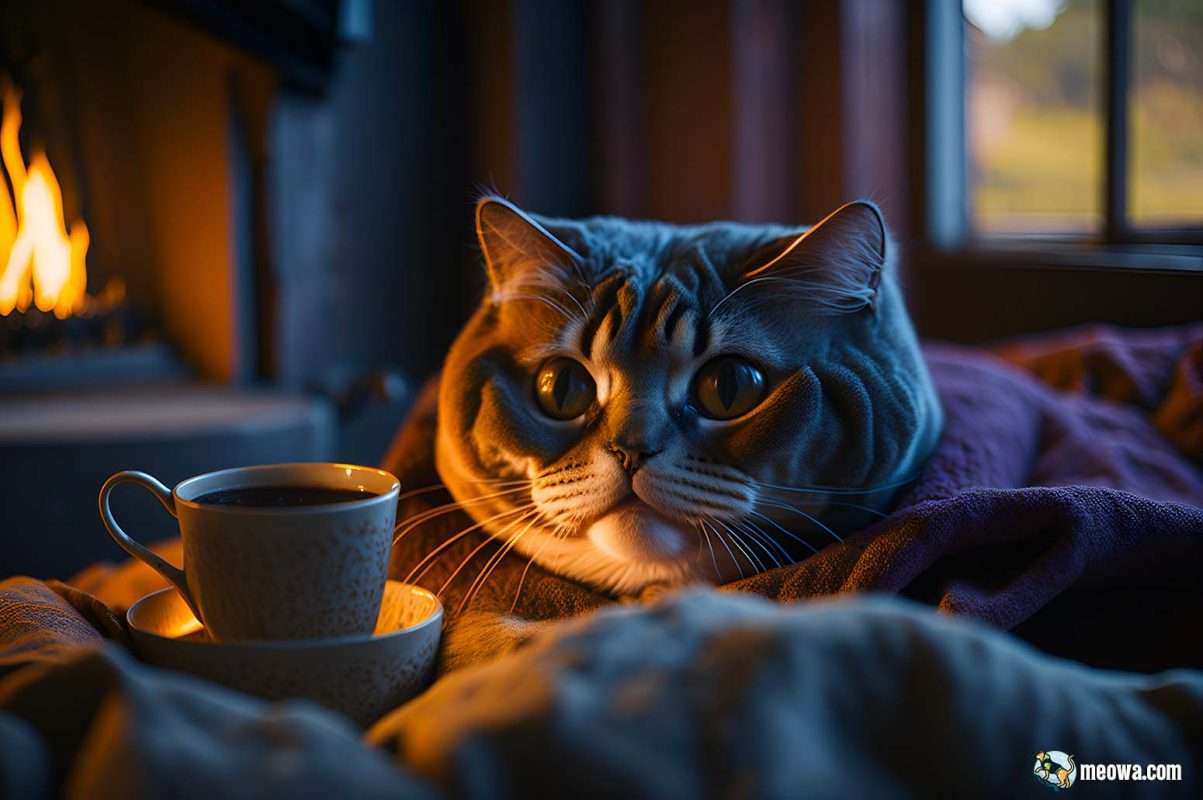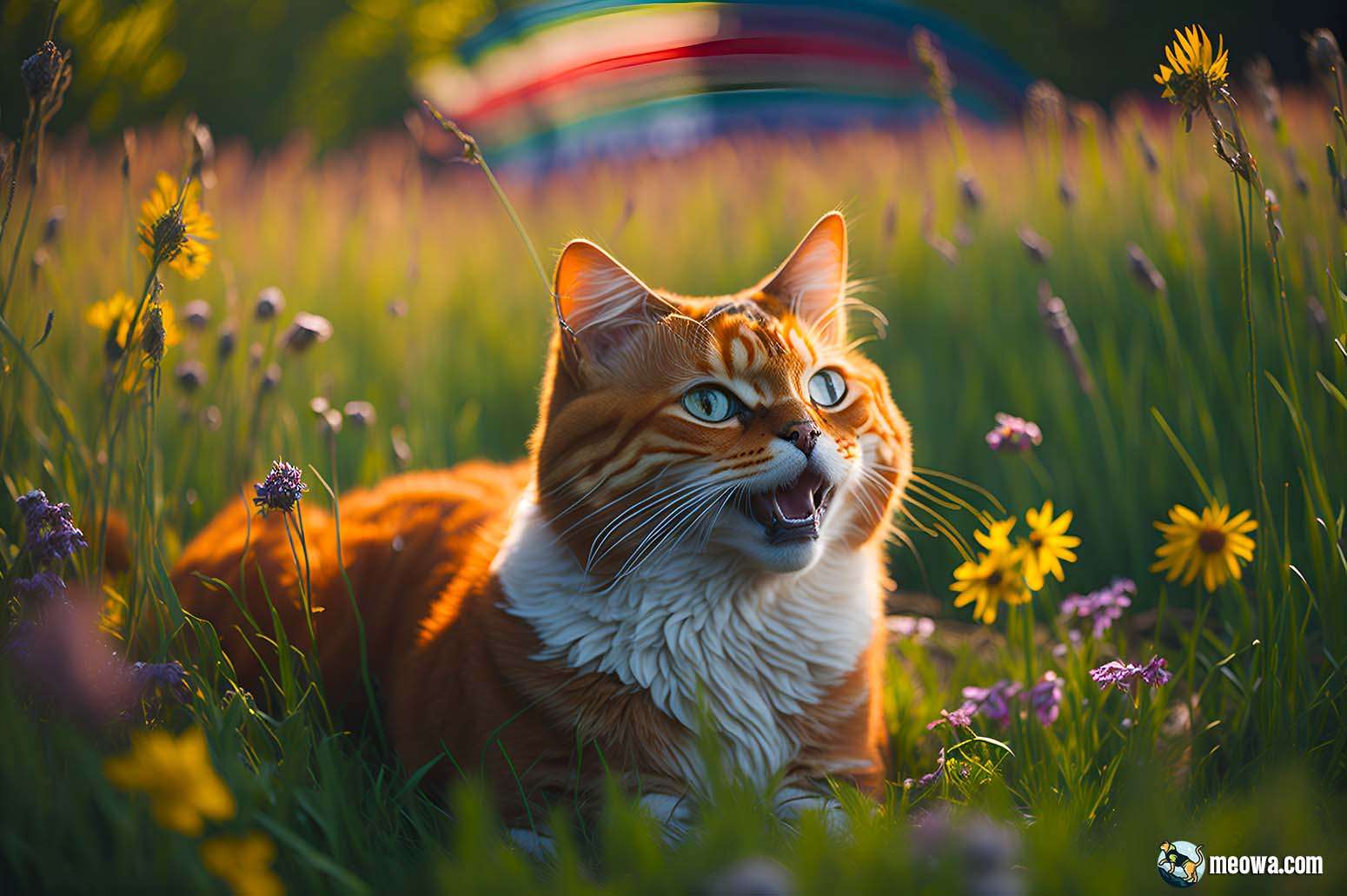Is My Cat Happy: Quiz & Tips
Welcome to the “Is My Cat Happy Quiz“! As a doting cat guardian, you’re on a quest to ensure your feline friend’s delight is nothing short of purr-fect. Our lighthearted and informative quiz will guide you through the fickle feline universe, helping you decode your cat’s emotions and contentment level. Bear in mind, this quiz isn’t meant to replace expert guidance. If you have worries about your cat’s happiness, seek advice from a trusted veterinarian.
So, let’s embark on this paws-itively exciting journey to unlock the secrets of your cat’s happiness!
Instructions: For each question, select the answer that best describes your cat’s behavior.
This quiz is for entertainment & informational use only, not a substitute for professional advice. Please consult a veterinarian for concerns regarding your cat’s behavior or health.
How Happy is Your Cat? Quiz
Results:
Fascinating Facts and Statistics
- Did you know that a cat’s purring can be a sign of happiness, relaxation, and even self-healing? (1)
- According to a study by the University of Lincoln, UK, and Nottingham Trent University, cats prefer interacting with humans over food, toys, and scent stimuli, indicating the importance of human interaction in their happiness. (2)
- Cats have a specific “slow blink” they use to communicate affection and trust with their owners, which can be an indicator of their happiness and comfort. (3)
- A study conducted by the University of Guelph found that cats with more environmental enrichment, such as toys, perches, and hiding places, showed fewer signs of stress and were likely to be happier. (4)
- Research from Oregon State University suggests that playtime, especially interactive play with their owners, can significantly improve a cat’s overall happiness and well-being. (5)
Why Cat Happiness Matters (and Why You Should Care)

Cat happiness is essential for your feline friend’s well-being, and it plays a significant role in their overall health. Ensuring that your cat is happy can lead to a stronger bond and a more harmonious home. So, let’s dive into why cat happiness matters and why you should care.
For starters, a happy cat is more likely to engage in healthy behaviors, such as grooming, playing, and interacting with you and other pets. A content cat will also be less prone to destructive behaviors like scratching furniture, knocking over items, or marking territory inappropriately.
Additionally, when your cat is happy, they are less likely to experience stress-related health issues. Stress in cats can contribute to problems like urinary tract disorders, digestive issues, and skin problems caused by excessive grooming. A happy cat is more likely to enjoy good health and a longer life.
Lastly, a happy cat makes for a happier home. When your cat is content, they are more likely to form strong bonds with you and other family members. This connection can lead to a more harmonious household and can even improve your own mental well-being.
“A cat has absolute emotional honesty: human beings, for one reason or another, may hide their feelings, but a cat does not.”
– Ernest Hemingway
Investing time and effort in your cat’s happiness is a win-win situation for both you and your feline friend, leading to a more joyful life together.
Paws-itively Helpful Tips for Boosting Your Cat’s Happiness

If you’re looking to enhance your cat’s happiness, you’re in luck! We’ve got some paws-itively helpful tips to make your home a feline-friendly utopia. Get ready to unleash your cat’s purr potential! So, grab a feather wand, and let’s get started!
- Tailor-made Spaces: Provide designated areas for your cat’s different needs, like a cozy spot for napping, a perch for bird-watching, and a designated scratching area. Catering to your cat’s preferences will make them feel content.
- The Power of Play: Engage your cat in interactive play sessions daily to strengthen your bond and stimulate their mind. Experiment with various toys to find their favorites and keep playtime fresh and exciting.
- Soothing Sounds: Play soft music or calming sounds, like bird songs or gentle rain, to create a peaceful atmosphere that will help your cat relax and feel at ease in their environment.
- Social Butterfly: If your cat enjoys the company of other animals, consider adopting a feline companion or scheduling playdates with other cats. Social interaction can contribute significantly to your cat’s happiness.
- The Joy of Exploration: Encourage your cat’s natural curiosity by providing new and interesting objects to investigate, like cardboard boxes or paper bags. Rotating toys and hiding treats will keep their environment engaging.
- Purr-fect Grooming: Regular grooming sessions not only help maintain your cat’s appearance but also offer a bonding experience and a chance to monitor their health. A well-groomed cat is often a happy cat.
- Listen to Your Cat: Pay attention to your cat’s body language and vocalizations to understand their needs and emotions better. Responding to their cues will show them you care and strengthen your bond.
Remember, it’s essential to monitor your cat’s well-being and consult a veterinarian or professional cat behaviorist if you notice any signs of stress or unhappiness. Your cat’s happiness is worth the effort!
Cat Happiness and Well-being: Insights from Experts
A study conducted by the University of Lincoln, UK, revealed that cats are more in tune with their owners’ emotions and needs than we often give them credit for. Dr. Lauren Finka, a research fellow at the university, stated that cats have the ability to recognize and respond to their owner’s feelings.
Dr. Finka explains, “Cats are often seen as independent and low maintenance, but our research shows that they are actually very sensitive to their owner’s emotional state and can be profoundly affected by it.”
To ensure cat happiness, experts recommend providing an enriching environment with plenty of toys, scratching posts, and hiding spots. Additionally, establishing a consistent routine for feeding, playtime, and grooming can help promote a sense of security for your cat.
Dr. Finka further highlights the importance of spending quality time with your cat, as it helps strengthen the bond between you and your feline companion. Regularly engaging in interactive play and providing mental stimulation can significantly contribute to your cat’s happiness and well-being.
Source: Finka, L. R., Luna, S. P., Brondani, J. T., Tzimiropoulos, Y., McDonagh, J., Farnworth, M. J., & Ruta, M. (2019). Geometric morphometrics for the study of facial expressions in non-human animals, using the domestic cat as an exemplar. Scientific Reports, 9(1), 1-12.
People Also Ask
How to know if a cat is happy?
To recognize a happy cat, observe signs such as purring, kneading, slow blinking, and a raised tail with a relaxed curve. Additionally, content cats maintain a healthy appetite, groom themselves, engage in playful activities, and interact positively with humans and other pets in the household.
Do cats feel happiness?
Indeed, cats can feel happiness and express it through various behaviors. They may seek attention, rub against people or objects, display playfulness, or explore their environment with curiosity. Ensuring a cat’s emotional well-being involves providing love, care, a comfortable living environment, and addressing their physical and mental needs.
Are cats happy when they purr?
While cats frequently purr when they are happy, purring can also indicate other emotions or needs. Purring may serve as a self-soothing mechanism, a form of communication, or even promote healing in some situations. Observing the cat’s accompanying behaviors and body language helps in understanding the context of their purr.
Is my cat happy being indoors?
An indoor cat can lead a happy life if provided with appropriate mental and physical stimulation, such as toys, scratching posts, and climbing opportunities. Ensuring regular playtime, maintaining a consistent routine, offering a comfortable resting space, and meeting their social needs contribute to their happiness and overall well-being.
How can I improve my cat’s happiness?
To boost your cat’s happiness, create a safe and clean environment, offer regular playtime and mental stimulation, and encourage social interaction. Provide a balanced diet, proper grooming, and timely veterinary care to support their overall well-being, contributing to a happier and healthier cat.
What does a cat’s tail reveal about its mood?
A cat’s tail communicates its mood. A raised, gently curved tail suggests happiness, whereas a puffed-up or rapidly swishing tail may indicate agitation or fear. A lowered or tucked tail often represents submission, discomfort, or unease.
How do I know if my cat is unhappy or stressed?
Signs of an unhappy or stressed cat include hiding, reduced appetite, excessive grooming, aggression, lethargy, and unusual vocalizations. Monitor for sudden changes in behavior, litter box habits, or grooming patterns, as these can indicate distress and warrant attention.
Do cats prefer living with other cats for happiness?
Cats exhibit individual social preferences; some enjoy the company of other cats, while others may prefer solitude. When introducing new cats, do so gradually, and ensure adequate resources are available to promote harmonious coexistence and happiness among your feline companions.
How important is routine for a cat’s happiness?
Maintaining a consistent routine is crucial for a cat’s happiness, as it provides a sense of security and stability. Cats thrive on predictability, so try to establish regular feeding, playtime, and grooming schedules. A consistent routine helps reduce stress, contributing to a happier and more content feline.
Conclusion
Promoting cat happiness is essential not only for your feline friend’s emotional well-being but also for enriching their lives and deepening your bond. As cat lovers, we recognize that a happy and content cat is more likely to engage in play, socialize, and exhibit affection towards their human family. By implementing the tips and strategies discussed in this article to enhance your cat’s happiness, you can foster a nurturing and loving environment that will help your cat thrive. Here’s to a lifetime of purrs, cuddles, and joy-filled moments with your cherished feline companion!
In conclusion, understanding and catering to your cat’s needs can significantly contribute to their happiness. If you suspect your cat may be experiencing other issues, such as separation anxiety, take our Does My Cat Have Separation Anxiety Quiz to gain further insights and help your feline friend live a content and stress-free life.
Sources:
- Scientific American: Romotsky, E. (2014). Why Do Cats Purr? Scientific American. Retrieved from https://www.scientificamerican.com/article/why-do-cats-purr/
- Behavioural Processes: Vitale Shreve, K. R., Mehrkam, L. R., & Udell, M. A. R. (2017). Social interaction, food, scent or toys? A formal assessment of domestic pet and shelter cat (Felis silvestris catus) preferences. Behavioural Processes, 141, 322-328.
- Psychology Today: Bradshaw, J. (2013). How Your Cat Sees You. Psychology Today.
- Applied Animal Behaviour Science: Ellis, S. L. H., Rodan, I., Carney, H. C., Heath, S., Rochlitz, I., Shearburn, L. D., Sundahl, E., & Westropp, J. L. (2013). AAFP and ISFM Feline Environmental Needs Guidelines. Journal of Feline Medicine and Surgery, 15(3), 219-230.
- Journal of Feline Medicine and Surgery: Delgado, M. M., & Hecht, J. (2019). Evaluating the effect of object play on the welfare of domestic cats living in a shelter. Journal of Feline Medicine and Surgery Open Reports, 5(2), 1-9.

